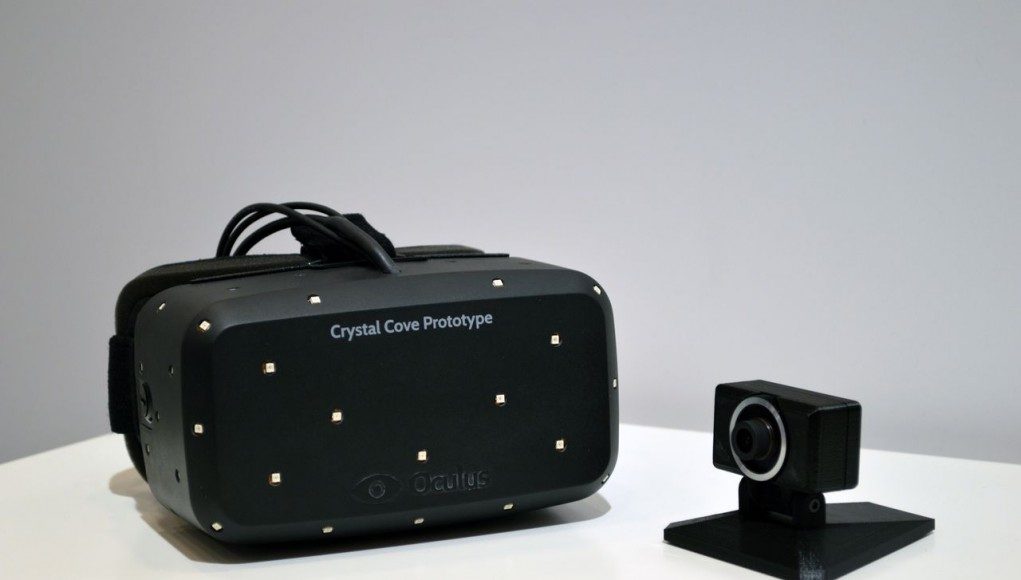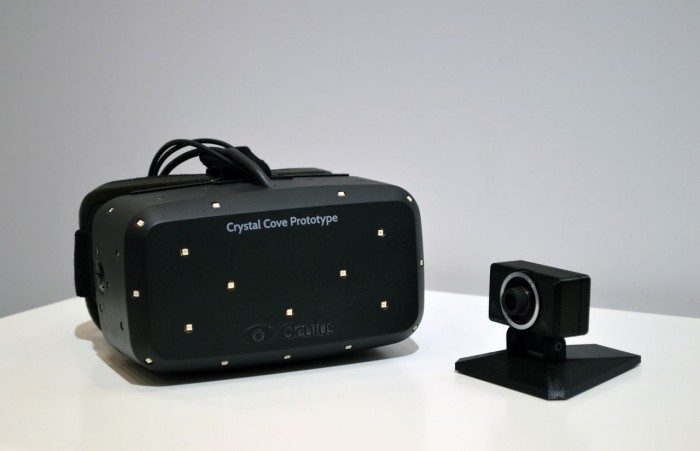It finally happened, WIRED have published details on the new Oculus Rift prototype, codenamed ‘Crystal Cove’ with positional tracking and a brand new AMOLED panel.
The Real Next Gen
After what seems like forever spent speculating on just when the next version of the Oculus Rift would look like and what features it would carry, Wired.com were the lucky ones to get their hands on Oculus VR’s next generation HMD. Recently Road to VR spotted what we now know as ‘Crystal Cove’ hiding in an image used in an article by Wired based around a recent visit to Oculus VR HQ. Seems we were reasonably accurate as today, WIRED released details confirming our findings.
So, what is Crystal Cove and how does it improve upon previous prototypes?
First up is that positional tracking we and the community agonised over recently. As suspected, the system uses multiple LEDs and an IR tracking camera to gauge the translational position of the headset in 3D space. Up to now of course, you’ve only had orientation based tracking. The new system is hoped to help enormously with one of the Development Kits major drawbacks, nausea caused by the disconnect between what you saw in the game and your head movements. This is of course should allow the player to feel much more like they occupy a virtual space rather than a spectator in it. Actions such as leaning around corners, crouching etc. should now be possible.
The system Oculus have opted for bears some resemblance to a concept featured on Road to VR a little while back. The PosiTTron optical tracking system which was designed by Jordi Batallé. See the original demonstration video for this below:
Finally, Crystal Cove includes a low latency AMOLED panel in place of the old LCD panel which was plagued by motion blur and another contributor towards motion blur. This is one of the weapons in Oculus VR’s war on latency, the enemy of immersion. By reducing the latency of another component in the pipeline they’re edging the experience ever closer to the feeling of ‘being there’ and their target of < 20ms responsiveness (even less if Palmer and Carmack get their way).
WIRED also reports news of a new demo from EPIC based on the Unreal Engine 4 engine, similar to that which Oculus has used in demos for its previous 1080p based prototypes units seen at game and trade shows over the last 12 months. It’s presumed (by us) that the demo includes support for translation / positional tracking in order to show of the new prototype’s capabilities.
As to how closely the new prototype matches the capabilities of the long awaited commercial edition of the Oculus Rift (aka CK1) is anyone’s guess, but it does seem plausible that we’ll see both technologies in the final headset come Q3 this year.
We’re meeting with Oculus on Thursday and are very much crossing our fingers that Crystal Cove will be on hand to try. We’ll of course update you with our findings as soon as we can.
UPDATE: Seems hands-on impressions are flooding in from all over the web as Oculus VR kicks off with demos today. An image on Gizmodo’s website does a nice job of summarising the capabilities of the new tracking system.








